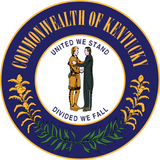
United We Stand, Divided We Fall
The phrase “United We Stand, Divided We Fall” has been invoked countless times in United States history. Often shortened to simply “United We Stand,” the phrase is sometimes used as a kind of catch-all reference to the country’s long history of patriotism. It’s also sometimes used as a rallying cry when the United States faces difficult times. But, likely, few Americans have ever given much thought to the origins of the expression. So, where did it come from?
 The first use of the phrase in American history, as far as anyone knows, was likely by John Dickinson, one of the signers of the Declaration of Independence. In 1768, as tensions between the colonists and their British overlords increased, Dickinson penned a tune called “The Liberty Song.” In the song, Dickinson included the verse, “Then join in hand, brave Americans all! By uniting we stand, by dividing we fall!” A few years after the Revolution, after its admission to the Union, Kentucky adopted the expression as its state motto.
The first use of the phrase in American history, as far as anyone knows, was likely by John Dickinson, one of the signers of the Declaration of Independence. In 1768, as tensions between the colonists and their British overlords increased, Dickinson penned a tune called “The Liberty Song.” In the song, Dickinson included the verse, “Then join in hand, brave Americans all! By uniting we stand, by dividing we fall!” A few years after the Revolution, after its admission to the Union, Kentucky adopted the expression as its state motto.
The phrase made another noteworthy appearance in 1799 when Patrick Henry, the stalwart patriot who once declared “Give me liberty or give me death,” gave his last public address. He was an aging man and very near death, but he spoke with all the patriotic fervor of his youth when he said, “United we stand. Divided we fall. Let us not split into factions which must destroy that union upon which our existence hangs.”
In 1858, when relative political newcomer Abraham Lincoln challenged Stephen Douglas for his Senate seat, he invoked the notion—if not the exact expression—when he said that “a house divided against itself cannot stand.” It was a powerful image, particularly as the country moved inexorably toward civil war. When the war did erupt, the Union army sometimes used “United We Stand, Divided We Fall” as a rallying cry.
 Many years after it was first used, “United We Stand” continues to be a powerful slogan when the United States faces times of distress. The notion that Americans—with their shared background and ideals—are stronger when they work together for a common cause than when they work individually for separate ends is a powerful one. The phrase was often used during World War II both within the United States and among the Allies to rally support for the war effort and was again revived in the aftermath of the September 11th attacks.
Many years after it was first used, “United We Stand” continues to be a powerful slogan when the United States faces times of distress. The notion that Americans—with their shared background and ideals—are stronger when they work together for a common cause than when they work individually for separate ends is a powerful one. The phrase was often used during World War II both within the United States and among the Allies to rally support for the war effort and was again revived in the aftermath of the September 11th attacks.

The phrase made another noteworthy appearance in 1799 when Patrick Henry, the stalwart patriot who once declared “Give me liberty or give me death,” gave his last public address. He was an aging man and very near death, but he spoke with all the patriotic fervor of his youth when he said, “United we stand. Divided we fall. Let us not split into factions which must destroy that union upon which our existence hangs.”
In 1858, when relative political newcomer Abraham Lincoln challenged Stephen Douglas for his Senate seat, he invoked the notion—if not the exact expression—when he said that “a house divided against itself cannot stand.” It was a powerful image, particularly as the country moved inexorably toward civil war. When the war did erupt, the Union army sometimes used “United We Stand, Divided We Fall” as a rallying cry.

